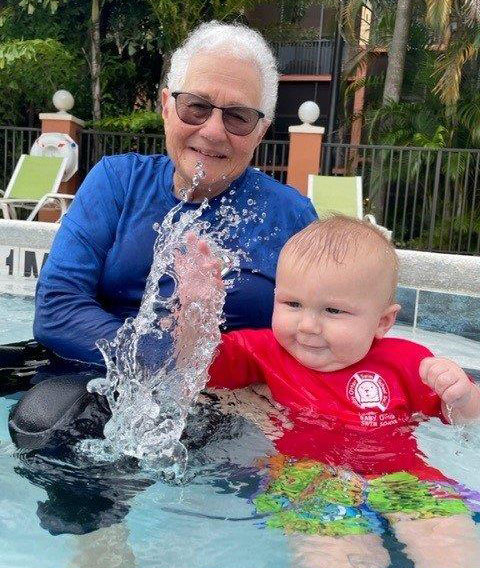Every Little Thing You Need to Understand About Swimming Lesson for Beginners: A Comprehensive Guide
Understanding the principles of swimming lessons for newbies is necessary for fostering both safety and ability development in the water. The path to coming to be a positive swimmer is frequently fraught with obstacles, consisting of the usual worry of water.
Value of Water Safety
Water security is paramount for any person venturing into marine environments, especially newbies. Understanding the prospective threats linked with water tasks is crucial to make sure a satisfying and secure experience. Stats suggest that sinking continues to be a leading source of unintentional fatality, highlighting the requirement for enhanced awareness and precautionary procedures.
The initial step in water safety and security includes acknowledging the importance of supervision. Adults must constantly keep a close eye on youngsters and inexperienced swimmers, as also shallow water can posture considerable threats. Furthermore, putting on appropriate flotation protection devices, such as life coats, is essential, particularly for those who are not yet certain in their swimming capacities.
An additional critical facet is familiarizing oneself with the certain atmosphere. Each body of water has special qualities, consisting of currents, trends, and temperature level, which can influence security. Swimmers should additionally know climate condition and possible risks, such as immersed things or unexpected modifications comprehensive.
Discovering the Right Trainer
Picking a certified teacher is an essential action in making sure a efficient and risk-free knowing experience for newbies. When searching for a teacher, consider their accreditations and experience. Seek people that are accredited in mouth-to-mouth resuscitation and Emergency Treatment, as well as those that hold identified swimming mentor credentials, such as those from the American Red Cross or YMCA.

In addition, examine the teacher's communication skills. They need to have the ability to communicate directions clearly and demonstrate strategies effectively. A connection between the learner and the trainer can boost inspiration and cultivate a favorable discovering environment.
Last but not least, think about logistics such as class area, dimension, and scheduling. Smaller sized class sizes frequently enable even more personalized attention, which can be valuable for beginners. By thoroughly reviewing these factors, you can locate a trainer who will contribute to a successful swimming experience.
Vital Swimming Strategies
Understanding important swimming methods is essential for newbies intending to develop self-confidence and effectiveness in the water. The foundation of effective swimming lies in mastering the fundamental abilities that improve both safety and security and satisfaction during method.
One of the first strategies to focus on is appropriate breathing. Beginners should discover to breathe out undersea and breathe in rapidly when transforming their heads to the side, guaranteeing a steady rhythm that supports endurance. In addition, body positioning plays a crucial role; swimmers should maintain a streamlined pose, maintaining the body straight and flat to lower drag.

Finally, understanding the relevance of buoyancy can not be overlooked. Grasping drifting techniques will certainly improve convenience and stability in the water. By concentrating on these necessary strategies, novices can establish a strong swimming structure, establishing them up for greater success in future lessons and more sophisticated skills.
Various Swimming Styles
Many swimming designs exist, each offering unique techniques and advantages that deal with different preferences and objectives. The four primary strokes-- freestyle, breaststroke, butterfly, and backstroke-- develop the structure of affordable swimming and leisure methods.
Freestyle, additionally recognized as the front crawl, is defined by a flutter kick and rotating arm activities, allowing for maximum rate and performance. It is typically the most prominent choice for novices due to its simple method and adaptability in various water setups.
Backstroke, performed on the back, uses a similar flutter kick however uses a windmill arm activity. This stroke improves body positioning and promotes leisure in the water, making it a superb option for those who may really feel anxious while swimming.
Breaststroke features a frog-like kick and synchronised arm motions, promoting a slower pace that permits for enhanced breathing control. This stroke is specifically valuable for novices as it encourages an all-natural rhythm.
Lastly, the butterfly stroke, understood for its tough technique, includes a dolphin kick and synchronised arm motions. While advanced, grasping it can substantially boost total swimming efficiency. Embracing these diverse styles can bring about an all-around swimming experience.
Overcoming Common Challenges
Although swimming can be a fulfilling activity, newbies frequently run into different obstacles that might impede their development and satisfaction in the water. Begin by accustoming to the water in superficial areas, and practice breathing techniques outside of the water to develop self-confidence.
Another difficulty is grasping basic methods, such as drifting and stroke auto mechanics. Beginners need to concentrate on correct body alignment and breathing patterns. Making use of flotation protection devices can assist in establishing a sense of equilibrium while practicing stroke basics.

Lastly, discovering a supportive atmosphere, whether with group lessons or one-on-one coaching, can substantially How To Become A Swim Instructor boost discovering. Constructive feedback and support are important for fostering and conquering obstacles renovation. By resolving these common concerns head-on, novices can cultivate a favorable swimming experience and development at a comfortable speed.
Final Thought
In recap, swimming lessons for novices encompass crucial aspects such as security, reliable direction, and mastery of essential methods. Selecting a certified teacher is paramount to promoting an encouraging understanding environment. Focus on core skills, including breathing and body positioning, aids in creating self-confidence in the water. Understanding numerous swimming styles and attending to usual challenges better enhances the learning experience. Ultimately, a thorough strategy ensures that beginners not just acquire swimming abilities but also grow a lifelong admiration for marine activities.
Recognizing the principles of swimming lessons for newbies is important for fostering both safety and security and skill advancement in the water.Water safety is critical for anybody venturing into aquatic atmospheres, especially newbies. Arm motions need to also be collaborated with the kick; newbies should discover the importance of getting to onward and drawing via the water properly.
Although swimming can be a fulfilling activity, beginners typically run into numerous obstacles that might impede their progression and pleasure in the water. Begin by accustoming to the water in shallow locations, and technique breathing techniques outside of the water to construct confidence.